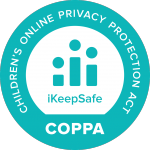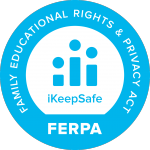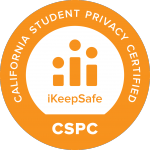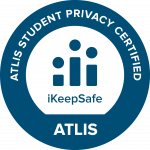The first bell of the school year doesn’t just signal the start of classes—it’s your chance to ignite a spark that will fuel learning all year long. While traditional icebreakers have their place, imagine walking into your classroom and watching students’ eyes light up as they dive into hands-on coding challenges that blend creativity, collaboration, and computational thinking.
These aren’t just activities; they’re relationship builders, confidence boosters, and the foundation for a classroom culture where mistakes become learning opportunities and every student feels empowered to innovate.
Why Start with Coding Challenges?
Before we dive into the activities, let’s address the elephant in the room: why coding on day one? The answer lies in what coding naturally encourages: experimentation, iteration, and a celebration of process over perfection. These are exactly the mindsets we want to cultivate from the very first day.
Coding challenges also level the playing field. Whether your students are tech-savvy or complete beginners, everyone starts with curiosity and creativity as their primary tools. Plus, the collaborative nature of these activities helps shy students find their voice and natural leaders discover the joy of teaching others.
8 Creative Coding Challenges to Transform Your First Week
1. Program Your Partner (Unplugged Magic)
The Challenge: Transform your classroom into a living computer lab—no devices required.
Students pair up with one acting as the “programmer” and the other as the “robot.” The programmer must give precise, step-by-step instructions to navigate their partner through simple tasks like reaching a specific desk or picking up an object.
The Magic Moment: Watch as students realize that computers need incredibly specific instructions and begin naturally debugging their communication. This activity builds empathy, precision in language, and sets the stage for understanding how coding really works.
Pro Tip: Add obstacles or create a simple maze using desks and chairs to increase the challenge and the giggles.
2. Name Maze Navigation
The Challenge: Students design and code a personalized journey through their own identity.
Using Ozobot and either Color Codes or Blockly or Editor, students create tracks shaped like their names and program their robot to navigate through each letter. Encourage creativity—maybe the robot spins on vowels, changes colors on consonants, or performs a victory dance at the end.
The Learning: This combines self-expression with fundamental coding concepts like sequence, loops, and conditional statements. It’s also a beautiful way for students to make their mark in your classroom literally.
3. Emoji Emotions Pathway
The Challenge: Code feelings into motion and color.
Students select an emoji that represents their current mood or personality and design a track that embodies that emotion. A calm student might create gentle curves with slow, steady movements, while an excited learner could program rapid direction changes with flashing lights.
The Connection: This activity brilliantly weaves social-emotional learning into STEAM education. Students practice emotional vocabulary while learning to manipulate speed, direction, and visual outputs in their code.
4. Debug the Teacher’s “Mistakes”
The Challenge: Give students the power to be the teacher’s teacher.
Present a deliberately buggy piece of code, whether it’s incorrect Color Code sequences or flawed Blockly programs. Working in small groups, students identify the errors and propose solutions. Make it theatrical, act confused about why your code isn’t working!
The Transformation: Nothing engages students quite like the opportunity to help their teacher. This builds a growth mindset around mistakes while developing critical analytical skills and collaborative problem-solving abilities.
5. Classroom Constitution in Code
The Challenge: Transform class rules from a poster on the wall into an interactive coding experience.
Create a path with stops representing different classroom expectations like “Be Kind,” “Stay Curious,” or “Embrace Mistakes.” Students program Ozobot to pause at each station and perform a unique action, perhaps a light show for kindness or a spin for curiosity.
The Impact: Students take ownership of classroom norms while learning that rules can be creative, interactive, and even fun. It’s community building through computational thinking.
6. Engineer an Adventure Course
The Challenge: Turn everyday classroom materials into an engineering and coding playground.
Teams use available materials—paper tubes, tape, blocks, books—to construct obstacle courses. Then they program Ozobot to successfully navigate their creation using strategic code sequences.
The Skills: This challenge integrates spatial reasoning, engineering design process, and collaborative problem-solving. Students learn that coding isn’t just about screens—it’s about solving real-world challenges.
7. Digital Storytelling Theater
The Challenge: Bring narratives to life through code and movement.
Students craft short stories and program Ozobot to act them out using choreographed movements, strategic lighting, and timed actions. Whether it’s a space adventure, a fairy tale, or a story about their summer vacation, the robot becomes their storytelling companion.
The Cross-Curricular Magic: This seamlessly blends language arts with computational thinking, showing students that technology can enhance creativity rather than replace it.
8. Code Cipher Exchange
The Challenge: Create secret messages that only fellow coders can decode.
Teams design coded sequences that create recognizable patterns, shapes, or behaviors. They then trade their “ciphers” with other groups who must reverse-engineer the code to understand its purpose.
The Deeper Learning: This develops analytical thinking, attention to detail, and introduces concepts of algorithms and pattern recognition. Plus, there’s something inherently exciting about cracking codes!
Setting Up for Success
Start Simple: Begin with unplugged activities before introducing technology. This ensures every student can participate regardless of their comfort with devices.
Embrace Chaos: These activities can get loud and messy—that’s often a sign of engagement! Establish simple signals for attention and let the productive buzz of collaboration fill your room.
Document the Journey: Take photos and videos of students working. These become powerful portfolio pieces and help students reflect on their growth throughout the year.
Celebrate Iterations: Make it clear that the first attempt rarely works perfectly, and that’s exactly how it should be. Create a culture where “debugging” is celebrated as much as initial success.
The Ripple Effect
These first-week coding challenges do more than teach computational thinking—they establish your classroom as a space where:
- Mistakes are learning opportunities, not failures
- Collaboration is valued over competition
- Creativity and logic work hand in hand
- Every student’s voice and ideas matter
- Learning is active, not passive
Your Turn to Code the Culture
The beauty of starting your year with creative coding challenges lies not just in the technical skills students develop, but in the classroom culture you create. You’re showing students that learning can be joyful, collaborative, and deeply engaging from day one.
As you plan your first week, remember that you’re not just teaching coding concepts—you’re coding a classroom culture that will support learning, risk-taking, and innovation all year long. Your students will remember these first experiences long after they’ve forgotten traditional worksheets and lectures.
Ready to press “play” on an extraordinary school year? Your classroom coding adventure awaits!









